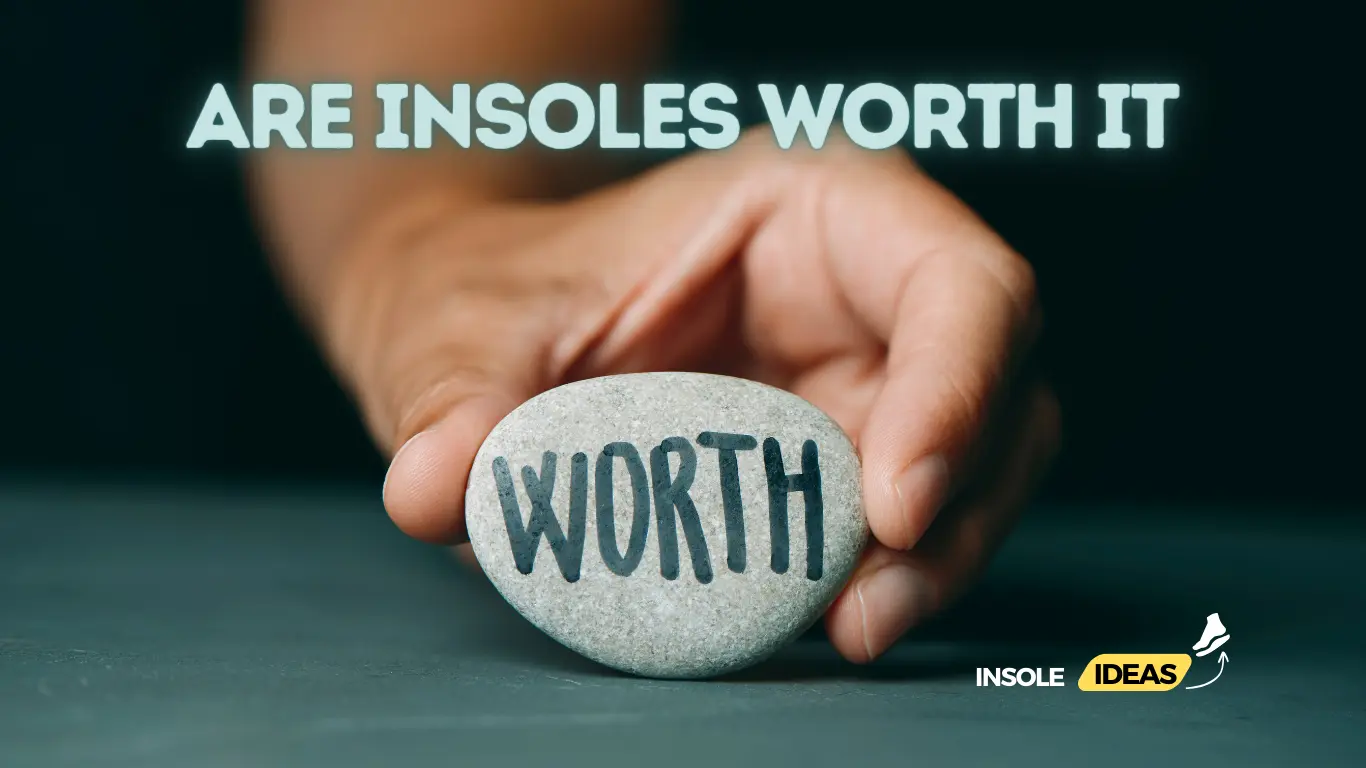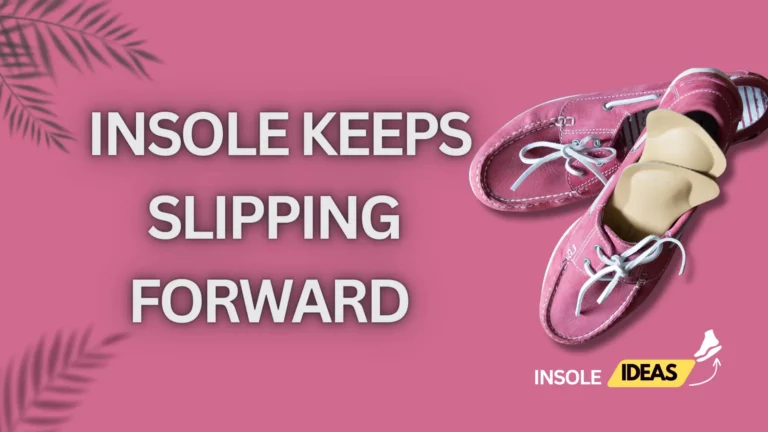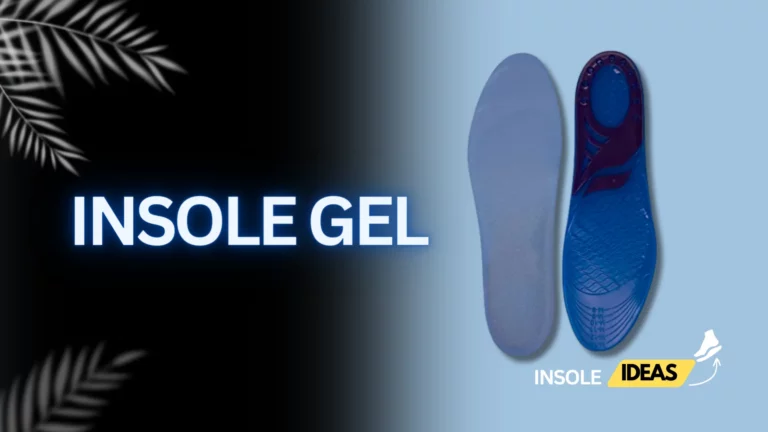The Definitive Guide to Insoles: Are They Truly Worth It?
Insoles, or shoe inserts or footbeds, are supportive devices placed inside shoes to provide additional comfort, support, and alignment for the feet. They come in various materials and designs to cater to different foot types and needs. Insoles can be made of foam, gel, cork, or specialized materials designed to address specific foot conditions.
What are insoles?
Insoles serve multiple purposes, including providing cushioning to absorb shock, redistributing pressure on the feet, correcting foot alignment, and improving overall foot function. They can be customized to address individual foot issues or purchased over the counter for general support.
A brief history of insoles
The concept of insoles dates back centuries, with ancient civilizations using materials like leaves, straw, or animal hides to cushion and protect the soles of their feet. However, the modern insole as we know it today has evolved significantly, with advancements in materials and technology leading to more specialized and practical designs.
Importance of foot health
Foot health is essential for overall well-being and quality of life. Feet support the body’s weight and are subjected to considerable stress and pressure during daily activities. Poor foot health can lead to discomfort, pain, and even mobility issues, affecting one’s ability to perform everyday tasks and enjoy an active lifestyle. Insoles promote foot health by providing support, alleviating discomfort, and preventing or managing foot problems. They are integral to foot care and can improve comfort, mobility, and overall quality of life.
Understanding Foot Problems
Foot problems are common ailments affecting people of all ages and backgrounds. From minor discomfort to debilitating conditions, foot issues can impact daily life and overall well-being. Understanding the causes and effects of foot problems is essential for prevention, management, and treatment.
Common foot issues
There is a wide range of foot problems that individuals may experience, including:
– Plantar fasciitis
– Bunions
– Corns and calluses
– Ingrown toenails
– Achilles tendonitis
– Flat feet
– High arches
– Neuromas
Each condition presents its symptoms and challenges, ranging from mild irritation to severe pain and mobility limitations. Identifying standard foot issues and their causes is the first step in effectively addressing and managing these conditions.
Impact of foot problems on daily life
Foot problems can significantly impact daily life, affecting mobility, comfort, and overall well-being. Individuals with foot issues may experience:
– Difficulty walking or standing for extended periods
– Chronic pain or discomfort
– Limited range of motion
– Decreased quality of life
– Impact on work, recreational activities, and social interactions
Managing foot problems is essential for maintaining an active and healthy lifestyle. Seeking appropriate treatment and support, such as wearing supportive footwear and using orthotic devices like insoles, can help alleviate symptoms and improve overall foot health.
Role of footwear in foot health
Footwear plays a crucial role in supporting and protecting the feet. The type of shoes worn can impact foot health and contribute to developing or exacerbating foot problems. Ill-fitting shoes, high heels, and shoes with inadequate support can increase the risk of injury and discomfort. Choosing appropriate footwear that provides proper support, cushioning, and stability is essential for maintaining foot health and preventing foot problems. Insoles can complement supportive footwear by providing additional cushioning, support, and alignment for the feet, further enhancing foot health and comfort.
What Are Insoles?
Insoles are orthopedic devices inserted into shoes to provide additional support, cushioning, and foot alignment. They serve multiple purposes, including relieving pain, improving comfort, correcting foot alignment, and preventing or managing foot problems. Insoles come in various materials, shapes, and designs to cater to different foot types and needs.
Definition and purpose
The primary purpose of insoles is to enhance foot comfort and support by providing additional cushioning and stability. They can help alleviate pressure points, absorb shock, and redistribute weight on the feet, reducing discomfort and fatigue during walking, standing, or other weight-bearing activities. Insoles may also correct foot alignment issues, such as overpronation or supination, and improve overall foot function.
Types of insoles
There are several types of insoles available, each designed to address specific foot conditions or preferences:
1. **Cushioned insoles:** These insoles are made of soft materials like foam or gel and are designed to provide extra cushioning and shock absorption for the feet. They are ideal for individuals seeking additional comfort and support during daily activities or high-impact sports.
2. **Supportive insoles:** Supportive insoles are firmer and more rigid than cushioned insoles, providing excellent stability and support for the feet. They are recommended for individuals with flat feet, high arches, or other biomechanical issues that require additional support to maintain proper foot alignment.
3. **Custom orthotics:** Custom orthotic insoles are individually tailored to the unique shape and biomechanics of the wearer’s feet. A podiatrist or orthopedic specialist typically prescribes them and may incorporate specialized features to address specific foot conditions, such as plantar fasciitis, arthritis, or diabetic foot ulcers. Custom orthotics offer personalized support and alignment for optimal foot health and function.
How insoles work
Insoles provide additional support, cushioning, and alignment for the feet, helping to distribute pressure more evenly and reduce strain on the muscles, tendons, and joints. They can help improve overall foot biomechanics and alleviate common foot problems, such as heel pain, arch pain, and forefoot discomfort. Insoles may also help prevent injuries by absorbing shock and reducing the risk of overuse or repetitive strain injuries. By promoting proper foot alignment and function, insoles can enhance comfort, mobility, and quality of life for individuals with foot issues or those seeking additional support during daily activities or sports.
Factors to Consider When Choosing Insoles
When selecting the right insoles for your needs, several factors should be considered to ensure optimal comfort, support, and effectiveness.
Foot type and shape
The first step in choosing the right insoles is to assess your foot type and shape. Individuals with flat feet may require insoles with arch support to help maintain proper foot alignment. In contrast, those with high arches may benefit from cushioned insoles to provide additional shock absorption. Understanding your foot mechanics and any specific biomechanical issues will help determine the insoles that best suit your needs.
Activity level
Consider your activity level and the activities you regularly engage in when selecting insoles. Individuals on their feet for extended periods or participating in high-impact activities like running or sports may require insoles with additional cushioning and support to help reduce fatigue and prevent injury. Choose insoles designed to withstand the demands of your lifestyle and provide the necessary protection and comfort for your feet.
Footwear compatibility
Ensuring that the insoles you choose are compatible with your footwear is essential. Some shoes may have limited space or specific design features that may affect the fit and function of certain types of insoles. Consider the thickness and shape of the insoles in the shoe’s interior space and structure to ensure a proper fit. Insoles should provide support and comfort without crowding the toes or causing discomfort or pressure points.
Expert Opinions on Insoles
Seeking expert opinions can provide valuable insights and guidance when selecting insoles for your needs. Professionals such as podiatrists, physical therapists, and athletes can offer practical perspectives based on their knowledge, experience, and expertise.
Podiatrists’ perspectives
Podiatrists specialize in foot health and are trained to diagnose and treat many foot problems. They can assess your foot mechanics, gait, and any specific issues you may have and recommend insoles that address your individual needs. Podiatrists can also guide proper foot care and footwear choices to promote overall health and prevent future problems.
Physical therapists’ views
Physical therapists are musculoskeletal health and rehabilitation experts and can offer valuable insights into how insoles can benefit individuals with specific foot conditions or injuries. They can recommend insoles as part of a comprehensive treatment plan to improve foot function, alleviate pain, and enhance overall mobility and quality of life. Physical therapists may also provide exercises and stretches to complement insoles and promote optimal foot health and function.
Athletes’ experiences
Athletes often rely on insoles to enhance performance, prevent injury, and improve comfort during training and competition. Their experiences and feedback can offer valuable insights into the effectiveness of different types of insoles for various sports and activities. Athletes can provide firsthand accounts of how insoles have helped them overcome foot problems, improve biomechanics, and achieve their fitness and performance goals. Their experiences can help guide your decision-making process and inform your choice of insoles based on your specific needs and goals.
How to Properly Use Insoles
Using insoles properly is essential to maximize their effectiveness and ensure optimal foot comfort and support. Follow these guidelines to get the most out of your insoles:
Insertion and adjustment
When inserting insoles into your shoes, ensure they are positioned correctly and provide adequate support and cushioning for your feet. Adjust the insoles as needed to achieve a comfortable fit and proper alignment with your feet. Insoles should feel tight enough and support the entire foot, from the heel to the arch and forefoot.
Maintenance and care
Regular maintenance and care of your insoles will help prolong their lifespan and effectiveness. Keep your insoles clean and dry to prevent odor and bacterial growth. If your insoles become dirty or sweaty, gently wipe them down with a damp cloth and allow them to air dry thoroughly before reinserting them into your shoes. Avoid exposing your insoles to extreme temperatures or harsh chemicals, damaging the materials and affecting their performance.
Replacement guidelines
Insoles should be replaced periodically to ensure they provide adequate support and cushioning for your feet. Over time, the materials in insoles may compress or wear out, reducing their effectiveness and comfort. Replace your insoles when you notice signs of wear and tear, such as visible damage, flattened cushioning, or decreased support. It’s also a good idea to replace insoles if you experience new or worsening foot pain or discomfort, as this may indicate that the insoles no longer provide adequate support or alignment for your feet. Follow the manufacturer’s recommendations for replacement intervals, or replace your insoles based on your usage and foot health needs.
Potential Drawbacks of Using Insoles
While insoles can provide significant benefits for foot health and comfort, it’s essential to be aware of potential drawbacks that may arise.
Initial discomfort
One common issue when using insoles is the possibility of experiencing initial discomfort. This discomfort can occur as your feet adjust to the new support and alignment provided by the insoles. It’s common to feel pressure points or mild pain during the initial period of wearing insoles, mainly if your feet are not accustomed to the added support. However, this discomfort typically subsides as your feet become accustomed to the insoles and you adjust to the new sensations.
Dependency issues
Another potential drawback of using insoles is the risk of developing a dependency on them for foot support and comfort. While insoles can temporarily relieve foot pain and discomfort, relying too heavily on them may weaken the muscles and ligaments in your feet over time. This can lead to increased dependency on the insoles and may exacerbate foot problems in the long run. Insoles are essential to a comprehensive approach to foot health, including exercises to strengthen the feet and ankles and wearing supportive footwear to mitigate this risk.
Incompatibility with specific footwear
Not all types of footwear are compatible with insoles, which can challenge some individuals. Specific shoes may have narrow or shallow footbeds that do not accommodate the added bulk of insoles, leading to discomfort or an improper fit. Additionally, shoes with built-in arch support or cushioning may need more room for additional insoles, making achieving the desired level of support and comfort difficult. When selecting insoles, it’s essential to consider the compatibility with your footwear to ensure a proper fit and optimal performance.
Addressing Common Myths About Insoles
Several myths and misconceptions surrounding insoles may influence people’s perceptions and decisions about effectiveness.
Insoles are only for elderly individuals.
One common myth is that insoles are only necessary for elderly individuals or those with foot problems. In reality, insoles can benefit people of all ages and activity levels by providing foot support, cushioning, and alignment. Whether you’re a young athlete looking to improve performance or an office worker seeking relief from foot pain, insoles can be beneficial for maintaining foot health and comfort at any age.
Insoles can cure all foot problems.
Another myth is that insoles can cure all foot problems, from minor discomfort to severe conditions like plantar fasciitis or bunions. While insoles can relieve symptoms and support foot health, they are not a cure-all for every foot problem. It’s essential to consult with a healthcare professional for proper diagnosis and treatment of foot issues and to use insoles as part of a comprehensive approach to foot care that may include other interventions such as physical therapy, stretching exercises, or footwear modifications.
Insoles are a one-size-fits-all solution.
Many people mistakenly believe that all insoles are the same and that any pair will provide the same level of support and comfort for their feet. In reality, insoles come in various shapes, sizes, and designs to cater to different foot types and needs. Choosing insoles appropriate for your foot type, activity level, and footwear is essential to ensure a proper fit and optimal performance. Custom orthotic insoles, prescribed by a healthcare professional, may be necessary for individuals with specific foot conditions or biomechanical issues that require personalized support and alignment.
Testimonials and Success Stories
Reading personal anecdotes and before-and-after user experiences can provide valuable insights into the effectiveness of insoles and their impact on foot health and comfort.
Personal anecdotes from users
Listening to personal stories from individuals who have used insoles can offer valuable perspectives on their effectiveness and benefits. Hearing about real-life experiences, including challenges, successes, and improvements, can help you understand how insoles may affect your foot health and comfort. Personal anecdotes can also provide tips and recommendations for selecting and using insoles based on individual preferences and needs.
Before-and-after experiences
Before-and-after experiences from users who have used insoles to address foot problems or improve comfort can demonstrate insoles’ potential benefits and outcomes. These stories often include details about the specific foot issues or conditions experienced before using insoles, the changes and improvements observed after using them, and any tips or recommendations for others considering using insoles. Before-and-after experiences can inspire confidence and motivation to try insoles as part of a comprehensive approach to foot health and comfort.
Comparing Insoles vs. Other Footcare Solutions
When considering footcare options, it’s essential to understand how insoles compare to other alternatives in addressing foot problems and promoting overall foot health.
Insoles vs. Orthopedic shoes
Insoles and orthopedic shoes are designed to provide support and comfort for the feet but differ in their approach and application. Insoles are removable inserts placed inside any footwear to provide additional cushioning, support, and alignment for the feet. They are versatile and can be used with a wide range of shoes, from casual sneakers to dress shoes, making them a convenient option for individuals seeking customizable foot support. Orthopedic shoes, on the other hand, are specially designed footwear that incorporates built-in features like arch support, cushioning, and wide toe boxes to accommodate foot deformities or conditions. While orthopedic shoes may offer more comprehensive support and customization, they are often more expensive and less versatile than insoles. Choosing between insoles and orthopedic shoes depends on individual preferences, budget, and the severity of foot issues.
Insoles vs. Foot exercises
Insoles and foot exercises are strategies for improving foot health and function, but they target different aspects of foot care. Insoles provide passive support and alignment for the feet by cushioning pressure points, redistributing weight, and correcting foot biomechanics. They benefit individuals seeking immediate relief from foot pain or discomfort and can be used as part of a comprehensive approach to foot care. Foot exercises, on the other hand, focus on strengthening the muscles, tendons, and ligaments in the feet and ankles to improve stability, flexibility, and balance. Exercises like toe curls, arch lifts, and ankle rotations can help prevent injuries, alleviate pain, and enhance overall foot function. While insoles and foot exercises complement each other in promoting foot health, they serve different purposes and may be more or less appropriate depending on individual needs and goals.
Insoles vs. Surgery
Insoles and surgery are vastly different approaches to addressing foot problems, with distinct benefits and considerations. Insoles offer a non-invasive, conservative option for managing foot issues by providing support, cushioning, and alignment for the feet. They are suitable for individuals with mild to moderate foot problems or those seeking temporary relief from symptoms without surgery. In contrast, surgery may be necessary for severe or persistent foot conditions that do not respond to conservative treatments like insoles. Surgical procedures can range from minor interventions like bunionectomy or neuroma excision to more complex surgeries like tendon reconstruction or joint fusion. While surgery can provide long-term correction for specific foot problems, it carries risks such as infection, prolonged recovery time, and potential complications. The decision to pursue surgery should be made in consultation with a healthcare professional based on individual needs, preferences, and the severity of the foot condition.
Case Studies: Real-Life Applications of Insoles
Real-life case studies provide insights into how insoles can be used to address specific foot problems and improve the quality of life for individuals.
Case 1: Office worker with heel pain
An office worker presents with chronic heel pain, exacerbated by long hours of standing and walking on hard surfaces. After consulting with a podiatrist, the individual is prescribed custom orthotic insoles to provide additional cushioning and support for the heels. Over time, the insoles help alleviate the pressure on the heels, reduce pain, and improve comfort during work hours.
Case 2: Runner with arch issues
A runner experiences discomfort and fatigue in the arches of their feet during long-distance runs. After trying various supportive footwear options, the runner invests in custom orthotic insoles, including stability shoes and arch supports. The insoles are tailored to provide targeted support and alignment for the arches, helping to reduce strain and improve running efficiency.
Case 3: Senior citizen with foot fatigue
A senior citizen complains of foot fatigue and discomfort when walking for extended periods. After consulting with a physical therapist, the individual is prescribed over-the-counter cushioned insoles to provide additional shock absorption and support for the feet. The insoles help reduce fatigue and improve comfort, allowing the individual to enjoy longer walks and maintain an active lifestyle.
Long-Term Effects of Using Insoles
Using insoles regularly can have lasting effects on foot health and function, providing preventative benefits and sustainability of results over time.
Preventative benefits
Insoles can help prevent foot problems by providing support, cushioning, and alignment for the feet during weight-bearing activities. Insoles can help prevent injuries such as plantar fasciitis, metatarsalgia, and stress fractures by reducing pressure points, absorbing shock, and promoting proper foot biomechanics. Regular use of insoles can also help maintain foot health and prevent the development of common foot problems associated with aging, such as arthritis, bunions, and corns.
Monitoring foot health over time
Insoles allow individuals to monitor their foot health and detect any changes or abnormalities over time. By paying attention to how their feet feel when wearing insoles, individuals can identify new or worsening symptoms and seek appropriate treatment or adjustments. Monitoring foot health regularly can prevent minor issues from developing into more severe conditions and ensure continued comfort and mobility.
Sustainability of results
The long-term effects of insoles depend on various factors, including the type of insoles used, individual foot mechanics, and adherence to proper usage and care guidelines. Using high-quality, properly fitted insoles can provide sustainable results for foot health and comfort over time. However, replacing insoles periodically is essential as they wear out or lose effectiveness to maintain optimal foot support and cushioning. Additionally, incorporating other footcare strategies such as regular stretching, strengthening exercises, and wearing supportive footwear can further enhance the sustainability of results and promote overall foot health and function.
Summary of Key Points
As we wrap up our discussion on insoles and their role in foot health, let’s recap some of the key points to remember.
Recap of benefits
Insoles offer numerous foot health and comfort benefits, including support, cushioning, and alignment. They can help alleviate pain, improve comfort, enhance performance, and prevent or manage foot problems such as plantar fasciitis, bunions, and heel pain. Whether you’re an athlete looking to improve performance or seeking relief from foot discomfort, insoles can promote overall foot health and well-being.
Considerations before purchasing
Before purchasing insoles, it’s essential to consider several factors to ensure you choose the right option for your needs. When selecting insoles, feel your foot type, shape, activity level, and compatibility. Custom orthotic insoles may be necessary for individuals with specific foot conditions or biomechanical issues, while over-the-counter options may be sufficient for general support and comfort. Additionally, be mindful of any potential drawbacks of using insoles, such as initial discomfort, dependency issues, and compatibility with specific footwear.
Importance of proper usage
Proper usage of insoles is crucial for maximizing their effectiveness and ensuring optimal foot health and comfort. Follow manufacturer guidelines for insertion, adjustment, and care of your insoles to ensure a proper fit and longevity. Gradually introduce insoles into your footwear and allow time for your feet to adjust to the new support and alignment. Monitor your foot health regularly and seek professional advice if you experience new or worsening symptoms. By using insoles correctly and incorporating them into a comprehensive approach to foot care, you can enjoy the benefits of improved comfort, support, and mobility for years to come.
Conclusion
In conclusion, insoles significantly promote foot health, comfort, and mobility for individuals of all ages and activity levels. Throughout this discussion, we’ve explored the various benefits of using insoles, including pain relief, improved comfort, enhanced performance, and preventative measures for foot problems. We’ve also addressed potential drawbacks and myths associated with insoles, highlighting the importance of considering individual needs, foot mechanics, and footwear compatibility.
Moreover, we’ve examined real-life case studies demonstrating the practical applications of insoles in addressing specific foot issues and improving the quality of life for individuals. From office workers to runners and senior citizens, insoles have relieved foot pain, fatigue, and discomfort, enabling individuals to maintain an active lifestyle and pursue their passions.
Looking ahead, it’s essential to continue emphasizing the importance of proper usage and maintenance of insoles to ensure their long-term effectiveness and sustainability of results. By incorporating insoles into a comprehensive approach to foot care, individuals can enjoy the benefits of improved foot health, comfort, and mobility for years to come.
In summary, insoles are valuable tools for enhancing foot health and well-being, offering support, cushioning, and alignment for the feet. With careful consideration and proper usage, insoles can be a game-changer for individuals seeking relief from foot discomfort and striving for optimal foot health and function.




